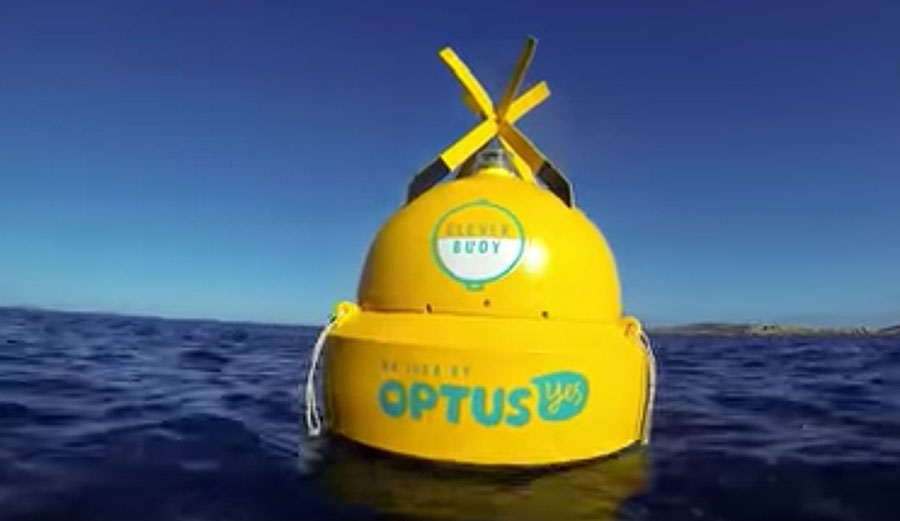
For the next two months, Newport Beach will be testing out the Clever Buoy shark mitigation system – a technology that promises a safer relationship between sharks and beachgoers. Photo: Shark Mitigation Systems
A new sonar shark detection system on the Balboa Pier in Newport Beach could be the next big thing in ocean safety, keeping surfers, swimmers, and other beachgoers safe from (or at least aware of) the “man in the grey suit.”
The Clever Buoy, developed by Shark Mitigation Systems out of Western Australia, was recently greenlit for a two-month pilot program in Newport that launched last week – the first time it’s been deployed in the U.S. after some success in Australia. Essentially a system of buoys and transponders that send off signals creating a “virtual net,” Clever Buoy tracks any animal that swims in and out of the system. It’s able to detect when a shark passes through and automatically sends an alert to local lifeguards. If the shark is acting aggressively or gives lifeguards reason to be concerned, they can then clear the beach if necessary until the shark swims away.
“This is a rational, measured, thoughtful [technology] that has positive environmental impacts,” said Ian Cairns, former Australian professional surfer and current Laguna Beach resident who’s partnered with Clever Buoy founder Craig Anderson to bring the technology to the U.S.
Having grown up in Western Australia, Cairns is no stranger to reckoning with the changing reality of rising shark populations at popular surfing beaches.
“I’ve surfed all over [Australia] and the only place, frankly, that you ever worried about great white sharks was surfing in South Australia,” Cairns told me. “But, when they protected the species there were juveniles swimming around in Perth waters and all of a sudden there were fatalities. This kind of activity never happened when I was living and surfing there.”
Cairns said it was seeing the situation paralleled in Southern California and concern for his own safety and that of his wife and kids that propelled him to get on board with Clever Buoy.
“Seeing what I’ve seen with the juvenile [great whites] at San Onofre, Manhattan Beach, and now up at Ventura, I’m just going, ‘Wow! The pattern is repeating itself.'”
The pilot project at Balboa Pier in Newport Beach is the result of a 60-day research waiver from the California Coastal Commission. According to Cairns, deploying the tech for a pilot in the months of October and November was completely intentional. Marine biologist and shark researcher David McGuire refers to October as “Sharktober” because great whites are mobile and passing through the Southern California area.
Five sonar transponders on the ocean floor (three south of the pier and two north of the pier) make up the pilot system in Newport along with an autonomous buoy at the end of the pier. Together, the whole system covers about 500 yards north to south. The buoy also picks up on sharks that have been tagged for research purposes within 500 to 800 yards.
The Clever Buoy pilot project comes in the wake of a shark attack on a teenager off Encinitas late last month and a fatal attack on a swimmer in Cape Cod back in August.
Cairns says that when such attacks occur, environmental activists are quick to stand up in defense of sharks, but few are willing to stand up on behalf of the victims calling for sensible solutions for coexistence.
“The only thing that really protects anyone is good information,” he said.

